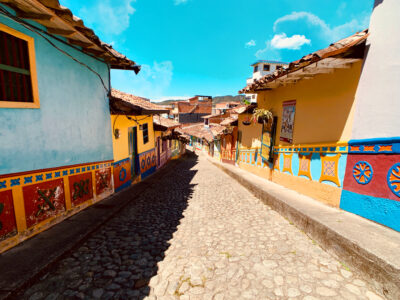
Shoot for the top: priceless advice from the superstars of wildlife photography
Expert insights into making it as a wildlife photographer from Frans Lanting, Marina Cano and Mattias Klum
1: How to start a career as a wildlife photographer by Mattias Klum

Mattias Klum (Lars-Magnus Ejdeholm)
If you want to be a photographer or a football player or a guitar player, anything where you’re ‘the product’, you need to be the engine of success and failure. You can’t rely on any other person to push you. You need to have an incredible amount of passion, almost an obsession, to do it.
My best advice is that you collect material and build your portfolio in such a way that you don’t necessarily show diversity, but a focus. Show you can do a particular topic or subject 100 per cent and really cover every aspect and nuance of it.
We’re flushed with a visual tsunami these days. There are so many great photographers out there, and there’s so much versatility and diversity, but what an editor looks for is a photographic language that stands out, and for playfulness and creativity. They want the photographer to be an artist. To stand out, personality and authenticity are very important.
As a Nat Geo photographer, you need to create images that have a good ‘read’, a good mix between art and documentary photography. If it’s too ‘postcard’, it won’t work. If it’s too abstract, it won’t read.
Editors need to be able to rely on you. If you want to work for any big magazine or publisher, they don’t want to hand out an assignment and fee and plane tickets if they can’t trust you’ll come back with something useful.
You have to be better, or as good as, people they’ve worked with in the past. If you work for a magazine like Nat Geo, you have to make sure they feel comfortable that, as a person, they want to work with you. That goes for any magazine, any NGO, any organisation. It’s important to be reliable and organised, as well as creative.
Social media is helpful these days, too. Instagram can show what you do. It’s valuable to potential sponsors and people interested in your job.
You should also ask: “Why do I do what I do?” I feel we’re putting so much pressure on our planetary systems that to not use photography and film and art to show our planet and these stories in a positive way would be a failure on my part. As a photographer, young or old, ask yourself: “Why am I shooting? What do I want to do? Do I have a story, or am I just creating visual art?” Creating visual art is fine, or if you have a story you want to tell, something you find beautiful, important or horrendously unfair, it’s about really making it happen.
For more on Mattias’ photography, see www.tierragrande.se. Follow him at www.instagram.com/mattiasklumofficial.
2: Why you should look for a bit of soul by Marina Cano

Marina Cano (Mike Fisher)
There are many photographers taking great pictures. You have to have something a bit more interesting to stand out, maybe because you’re original or you capture special moments. People say that with my pictures I catch the feelings between the animals, like the soul.
I have a lot of passion. I love to be there, to stay, to wait and enjoy being with animals and nature. I feel like I become one of the animals. I don’t see them as ‘wild’. I feel like part of the pride. I don’t mind spending a whole day out with the wildlife. I can forget to eat. I don’t mind the time. I remember follow cheetahs in Africa for hours and hours. We didn’t get any great photos but I enjoyed it a lot.
I don’t expect anything but when I take pictures I know in that moment if I’ve taken a great picture because I feel something jumping in my stomach. It’s something really special. That happens, if I’m lucky, once or twice in a year.
I love countries like Namibia and Kenya but I’m lucky because I have a wildlife park close to where I live in northern Spain. Cabarceno Park’s just 20 minutes from my home town of Santander and it’s home to more than 100 different species, all free to roam in big open spaces.
For photographing wildlife, many people think only of the Big Five. But there are many other kinds of wildlife that you can enjoy and take great pictures of, even in your garden. When I was in Cuba, people said, “How can we take wildlife pictures because we can’t go to these great destinations outside the country?” I told them there are little animals in their gardens and other areas that are not the Big Five but they are beautiful.
For more on Marina’s photography, see www.marinacano.com. Follow Marina at www.instagram.com/marinacano.
3: How to find a different approach by Frans Lanting

Frans Lanting (Frans Lanting)
The key for any photographer is to come up with a different point of view than what’s been shown before. It can be hard. Unless you’re content to repeat the approaches of other photographers, it’s a challenge.
Professional photographers have spent weeks or sometimes months in fabled places like Kenya’s Masai Mara or Botswana’s Okavango Delta. If you go to those places once or a couple of times in your life, it can be quite a disappointment if you think in a matter of weeks you can repeat, let alone do better than, what other photographers have accomplished in a lifetime.
My advice to photographers is not to try to emulate the professionals, but to come up with your own point of view. Don’t try to do everything all at once, and if you have control over an itinery or daily movement, be contrarian.
The funnel that many photographers slide into when they go to Africa is to attach their eyes to a camera with a 500 or 600 mm lens. I would say I’m bored of seeing photographs taken from a long distance with a big lens. There’s an excitement that comes with drawing in these amazing animals so closely but the proliferation of photographers with long lenses leads to a sameness in the images, unless you’re watching something extraordinarily special.
Right now, I like to use body positioning instead. It gives more original possibilities. You can also vary your point of view by going to places where you don’t need to sit in a safari vehicle. Walking safaris are a really interesting alternative.
It’s also worth spending time in private reserves, where you can do things that are not so easily done in national parks or national reserves. Working with remote cameras, Go-Pros and a variety of different POV cameras, from camera traps to cameras on wheels, can also all lead to other perspectives.
Nature always yields surprises. If you think you’ve seen it all, something else happens. If you go back to the same country or same place multiple times, you develop a depth of understanding that then becomes a benchmark for assessing new experiences. It also forces me to see things differently in the same situation.
For more on Frans’ photography, see www.lanting.com. Follow him at www.instagram.com/franslanting.



















